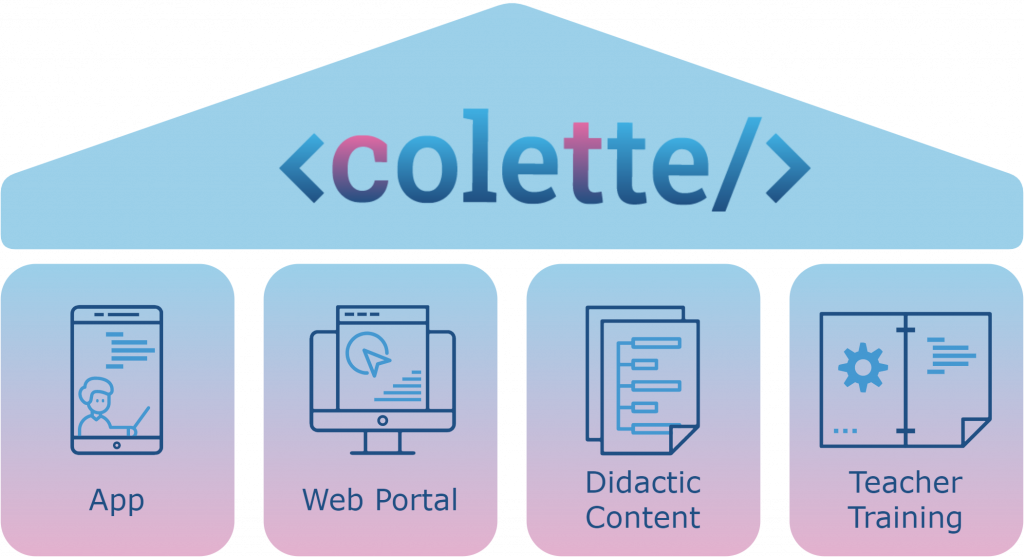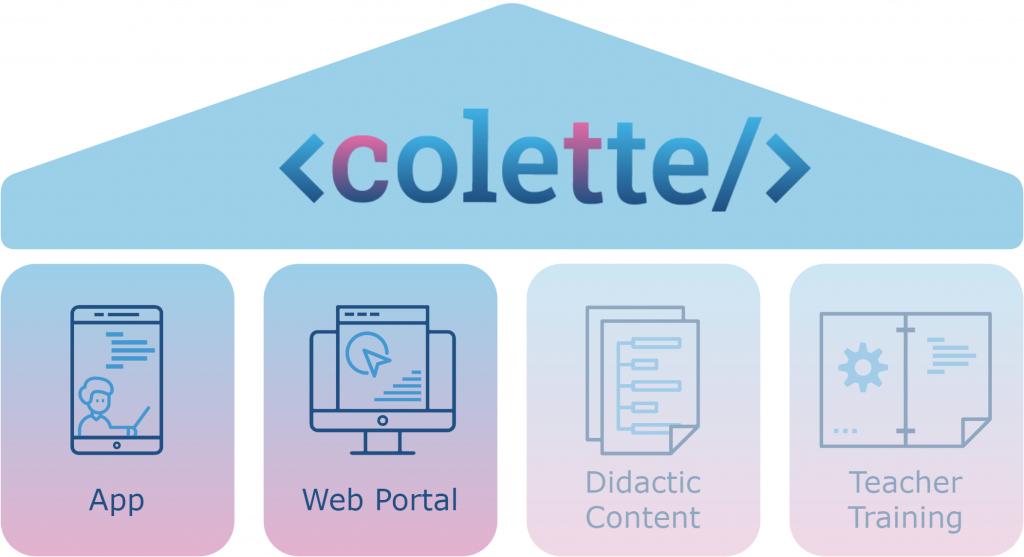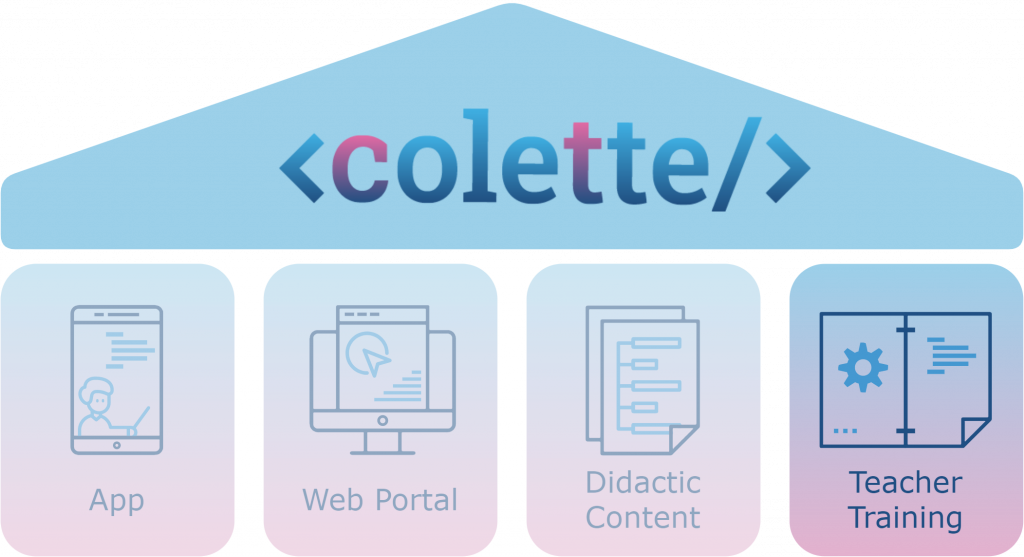The project results in the following Intellectual Outputs O1 to O6:
- IO 1: App based learning environment
- IO 2: Portal as an authoring tool
- IO 3: Generic Tasks for lower secondary level
- IO 4: Generic Tasks for upper secondary level
- IO 5: Handbook/Manuals for teachers
- IO 6: Short-Term Curriculum
All the outputs combined will provide a low-threshold approach (no costs, didactical support, ready-to-use content) to CT that can be integrated in regular school lessons. By offering the possibility to create and share task sequences, more and more content will be available to teachers which will help accelerate the dissemination of CT.

Technical Outputs
The Outputs 1 and 2 focus on the technical development of the learning environment <colette/> based on the successful idea of a two-component system (web portal and app) which is also used by MathCityMap (mathcitymap.eu) developed during the Erasmus+ projects MoMaTrE and MaSCE³. Therefore, we were able to use all the experiences and expertise we gained for the creation of <colette/>.
Using the web portal, teachers are able to use existing exemplary tasks and modify them so that they fit their indivdual needs. The tasks can be arranged in meaningful sequences catering to the students’ individual abilities. Moreover, the sequences can be shared with other teachers. By sharing task sequences, a European community of interested teachers can emerge in which educators inspire each other and create more and more content for <colette/>.
The functionality of the so-called Digital Classroom (developed during the MaSCE³ project) as a tool to communicate with students and to create an e-portfolio, was also adapted and modified for the use in <colette/>, offering the teachers a powerful tool to organize the teaching of CT, support the students and track their individual progress.
The app provides the possibility to use Augmented Reality as well as create and run algorithms. Using the camera of mobile devices, students can analyse the behaviour of algorithms they implemented themselves and how they influence objects in the virtual space around them.
The typical workflow will be as follows: the teacher creates a sequence of tasks in the web portal, based on the provided Task Families (IO 3 and 4), possibly adapt them and assign them to the students. The students work on the tasks and submit their solutions in accordance with the respective task format using the features of the app, e.g. submit a short program inside the app.

Content-based Outputs
To provide teachers with plenty of didactically well-funded content, a set of so-called Task Families (IO 3 and 4) will be created. A Task Family is a task which can easily be transfered to and modified for different settings and subjects and which is applicable to frequently occurring situations.
For example, the Task Family “Building Cubes” let’s students interact with cubes with which different structures are being built up in a 3D-grid. With this Task Family different problem definitions can be used all stemming from the so-called Generic Tasks: straight-forward implementation, a puzzle where the parts of the algorithm are not in the correct order or a piece of erroneous code where a mistake has to be corrected. The generic tasks will provide the teachers with various different tasks and thus make it easier for them to use <colette/> in regular classes.
IO3 will focus on the needs of younger children in lower secondary school whereas IO4 will produce content for upper secondary students, i.e. up until the pre-university level. The Task Families will be listed in a digital catalogue, giving the teachers the possibility to choose which tasks to include based on the needs of their classes.

Educational Outputs
The provided manual (IO5) explains educators how to use <colette/> and embed it in their classrooms, making it possible for teachers to learn about the basic functionality on their own. The manual, which is available in the project languages including English, serves also as a means of disseminating the project results.
Output 6 results in different modules of teacher training courses and provides a guideline for educators. A teacher training based on the short-term curriculum was offered to the associated schools in all participating partner institutions. Additionally, a teacher training on demand has been designed and published on YouTube as well as on this page.

